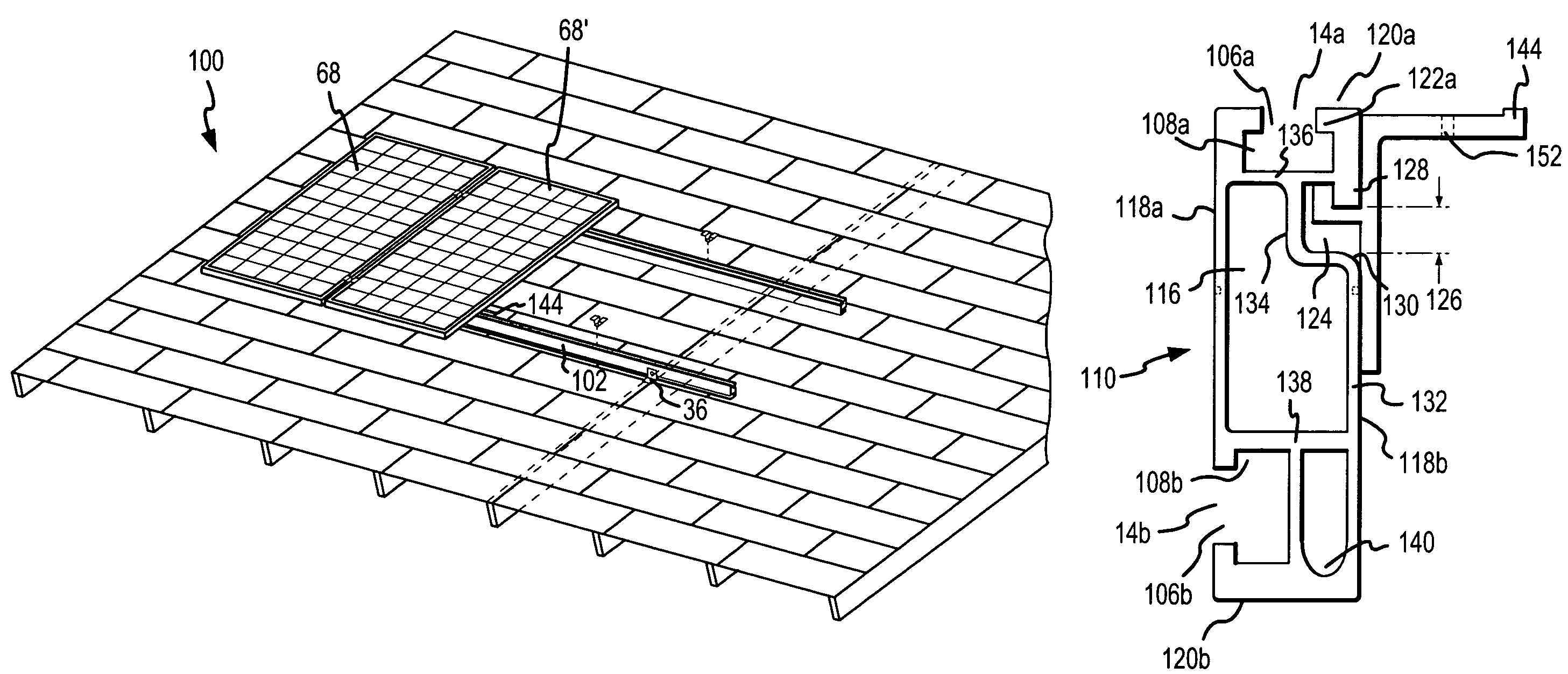Apparatus and method for positioning a module on an object
- Summary
- Abstract
- Description
- Claims
- Application Information
AI Technical Summary
Benefits of technology
Problems solved by technology
Method used
Image
Examples
Embodiment Construction
[0042]Briefly, the present invention provides a system for removably and adjustably mounting a device on a surface. The invention includes one or more dual track rails and one or more unique clamps that may be interconnected to a footing grid.
[0043]FIG. 1 illustrates the system for removably and adjustably mounting a device on a surface in an operative environment. As shown, the present invention is an apparatus for removably and adjustably mounting one or more photovoltaic modules on a surface such as a roof Referring initially to FIG. 1, the system for removably and adjustably mounting a device on a surface is shown and generally designated 10. The system for removably and adjustably mounting a device on a surface 10, according to the present invention, includes at least one rail 12. In a preferred embodiment of the present invention, at least one rail 12 is formed of extruded aluminum, but the material used is not a material consideration to the present invention. As shown perhap...
PUM
 Login to View More
Login to View More Abstract
Description
Claims
Application Information
 Login to View More
Login to View More - R&D
- Intellectual Property
- Life Sciences
- Materials
- Tech Scout
- Unparalleled Data Quality
- Higher Quality Content
- 60% Fewer Hallucinations
Browse by: Latest US Patents, China's latest patents, Technical Efficacy Thesaurus, Application Domain, Technology Topic, Popular Technical Reports.
© 2025 PatSnap. All rights reserved.Legal|Privacy policy|Modern Slavery Act Transparency Statement|Sitemap|About US| Contact US: help@patsnap.com



